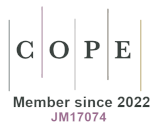Agglomeration and the National Park. A strained relation in African conditions – the case of Nairobi and Nairobi National Park
DOI:
https://doi.org/10.18778/2543-9421.03.03Keywords:
Nairobi, Nairobi National Park, relations, impacts, conflictsAbstract
The article discusses selected relations between the agglomeration of Nairobi and the functioning of the Nairobi National Park located within its borders. The close attention was paid to the socio-economic and spatial development of Nairobi, which exerts pressure on the ecosystem of the park. The spatial development (sprawl) of the city and blocking the migration corridors of mammals leading to the areas outside the park were listed among the main factors of anthropopression. The city development needs raise the question about the future of the Nairobi NP, which in fact is strictly dependent on the political decisions on national level.
References
Africa’s largest wind power project is now open in Kenya (2019). Pobrane z: www.qz.com/africa (10.04.2020).
Google Scholar
County annual development plan (CADP) 2019/2020 (2018). Nairobi: Nairobi City County.
Google Scholar
County integrated development plan (CIDP) 2018–2022 (2018). Nairobi: Nairobi City County.
Google Scholar
Feyers, S. (2015). Nairobi National Park situation analysis 2015, Environmental Planning Apprentice & Master of Environmental Management. Yale University.
Google Scholar
Kenya Civil Aviation Authority (2020). Pobrane z: https://kcaa.or.ke/about-us/statistics/passenger-traffic (10.04.2020).
Google Scholar
Kenya National Bureau of Statistics (2018). Nairobi: Nairobi City County.
Google Scholar
Kenya Vision 2030 (2007). Nairobi: National Economic and Social Council of Kenya, Government of The Republic of Kenya.
Google Scholar
Kenya Wildlife Service (2017). Annual Report 2017. Nairobi.
Google Scholar
Kinoti, K. (2018). Monitoring nature of Nairobi city land features from Landsat 5 images using index-based mapping. International Journal of Urban Design, 1 (1), s. 1–11.
Google Scholar
Mubea, K., Menz, G. (2014). Spatial effects of varying model coefficients in urban growth modeling in Nairobi, Kenya. Journal of Geographic Information System, 6, s. 636–652, https://doi.org/10.4236/jgis.2014.66053
Google Scholar
DOI: https://doi.org/10.4236/jgis.2014.66053
Mwanza, S., Chumo, C. (2019). Standard Gauge Railway (SGR) through Nairobi National Park. Will the iconic park survive? Perspectives, 32, UN Environment, Africa Network for Animal Welfare, Kenya.
Google Scholar
Nairobi Metro 2030. A world class African metropolis (2008). Nairobi: Ministry of Nairobi Metropolitan Development (MNMD), Government of The Republic of Kenya.
Google Scholar
Nairobi National Park, draft management plan 2020–2030 (2020). Nairobi: Kenya Wildlife Service Protected Areas Planning Framework.
Google Scholar
Nairobi slum dwellers feel let down by the ‘Promised Land’ (2018). Pobrane z: www.citylimits.org (10.04.2020).
Google Scholar
Ogega, O.M., Wanjohi, H.N., Mbugua, J. (2019). Exploring the future of Nairobi National Park in a changing climate and urban growth. W: P. Cobbinah, M. Addaney (eds.), The geography of climate change adaptation in urban Africa (s. 249–272). Cham: Palgrave Macmillan.
Google Scholar
DOI: https://doi.org/10.1007/978-3-030-04873-0_9
Ogutu, J.O., Piecho, H-P., Said, M.Y., Ojwang, G.O., Nino, L.W., Shem, C., Kifugo, S.C., Wargute, P.W. (2016). Extreme wildlife declines and concurrent increase in livestock numbers in Kenya. What are the causes? PLoS One, 11 (9), https://doi.org/10.1371/journal.pone.0163249
Google Scholar
DOI: https://doi.org/10.1371/journal.pone.0163249
Onyango, M.O. (2017). The implications of land use and land cover dynamics on the environmental quality of Nairobi City, Kenya. American Journal of Geographic Information System, 6 (3), s. 111–127, https://doi.org/10.5923/j.ajgis.20170603.04
Google Scholar
Otiso, K.M. (2012). Profile of Nairobi, Kenya. W: L. Kotze, S. Morse (eds.), Berkshire encyclopedia of sustainability, 9, Afro-Eurasia. Assessing sustainability (s. 222–227). Barrington: Berkshire Publ. Group.
Google Scholar
Republic of Kenya. Kenya urbanization review (2016). World Bank. Pobrane z: http://documents1.worldbank.org/curated/en/639231468043512906/pdf/AUS8099-WP-P148360-PUBLIC-KE-Urbanization-ACS.pdf (10.04.2020).
Google Scholar
Rodriguez, L.C., Henson, D., Herrero, M., Nkedianye, D., Reid, R. (2012) Private farmers’ compensation and viability of protected areas: The case of Nairobi National Park and Kitengela dispersal corridor. International Journal of Sustainable Development and World Ecology, 19 (1), s. 34–43.
Google Scholar
DOI: https://doi.org/10.1080/13504509.2011.587549
Said, M.Y., Ogutu, J.O., Kifugo, S.C., Makui, O., Reid, R.S., de Leeuw, J. (2016). Effects of extreme land fragmentation on wildlife and livestock population abundance and distribution. Journal for Nature Conservation, 34, s. 151–164, https://doi.org/10.1016/j.jnc.2016.10.005
Google Scholar
DOI: https://doi.org/10.1016/j.jnc.2016.10.005
The project on integrated urban development master plan for the city of Nairobi in the Republic of Kenya. Final report (2014). Nairobi: Nairobi City County (NCC), Technical Support from Japan International Cooperation Agency (JICA) Nippon Koei Co., Ltd., IDCJ Inc., EJEC Inc.
Google Scholar
Trzyna, T. (2014). Urban Protected Areas. Profiles and best practice guidelines. Best Practice Protected Area Guidelines Series, 22, Gland, IUCN.
Google Scholar
Downloads
Published
How to Cite
Issue
Section
License

This work is licensed under a Creative Commons Attribution-NonCommercial-NoDerivatives 4.0 International License.









